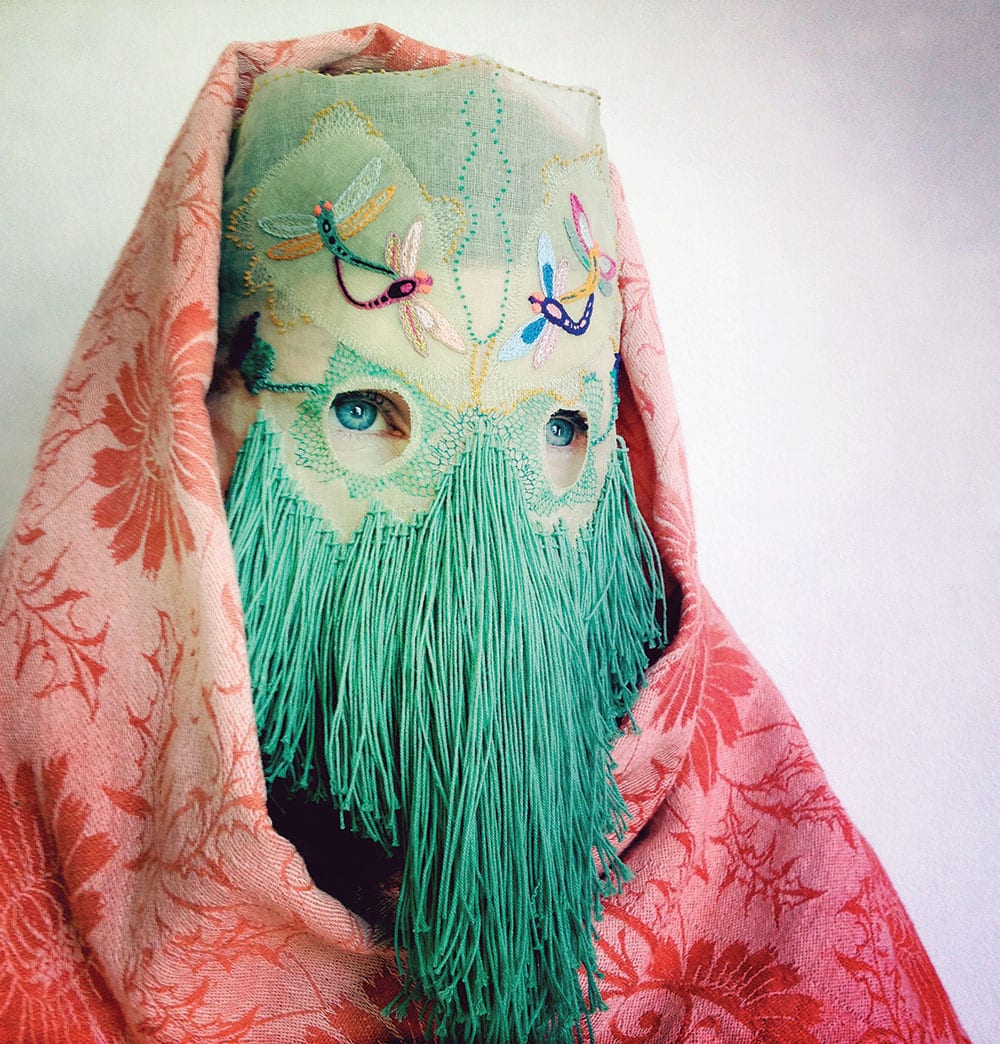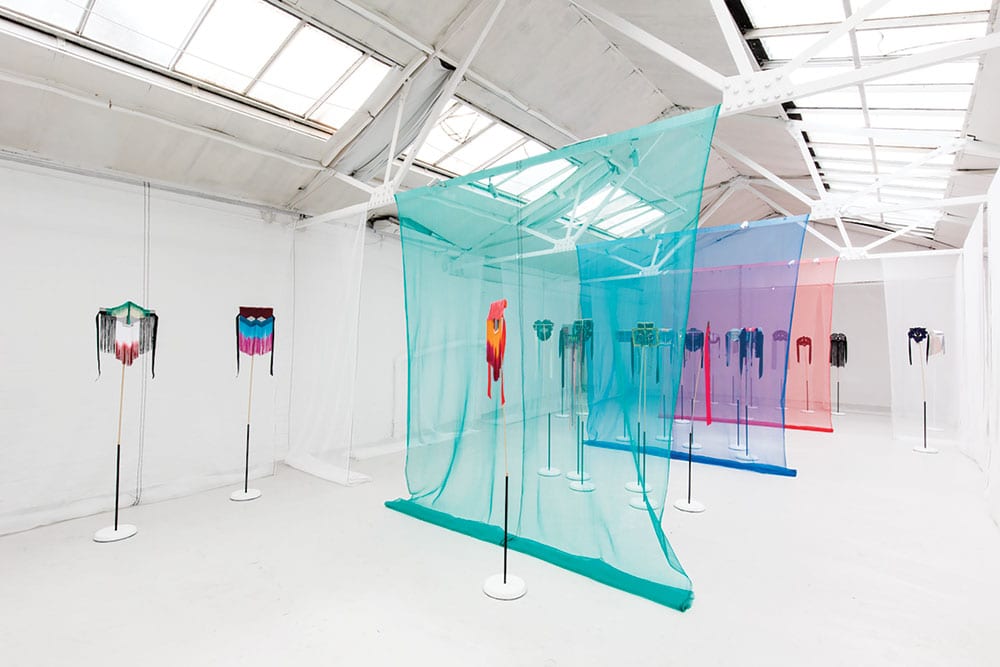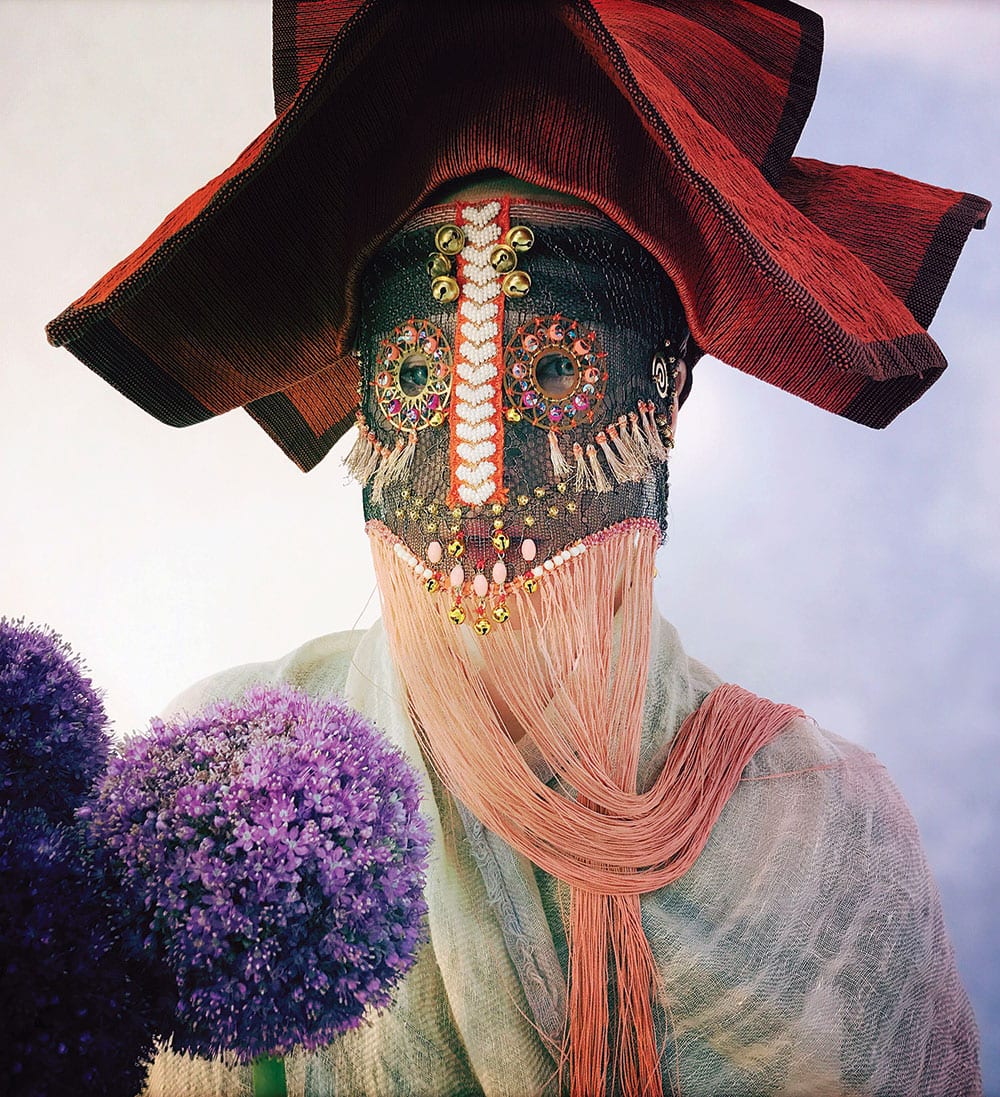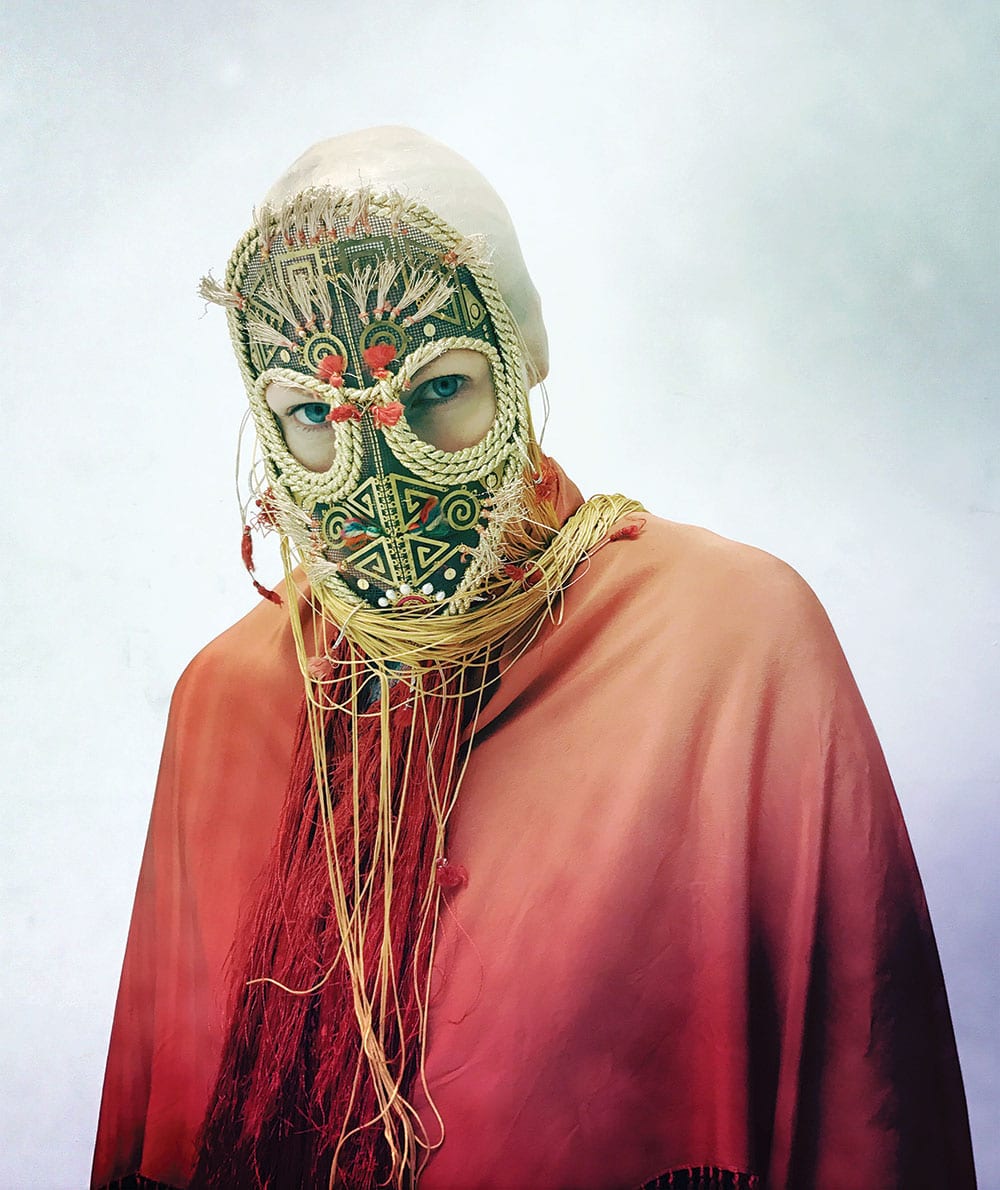Magnhild Kennedy creates elaborate mask art that is deeply unsettling yet exhilarating: wholly unusual, wildly imaginative, and vividly colored. They seem to combine elements of high fashion (with its joyous embrace of extremes), burka- or veil-like head coverings (with their power to efface women), or tribal masks (with their spiritual force). And, yet, Kennedy says, “I’m not particularly inspired by burkas or anything like that. Not inspired by masks, either. I just work on a piece of cloth that has an identity you can choose to put on your face.”

Stikker, 2012. Courtesy of the Damselfrau
Unintentionality was there from the start. Which is only to say the Norwegian Kennedy didn’t plan to make masks-as-art objects. Instead, the idea developed after she moved from Oslo to London and started clubbing. She had wanted to leave Norway since her teens. Back then, images in a 1994 issue of the British cultural monthly The Face Magazine made her choose London as her eventual destination. Clearly, great things were happening in the city, and she wanted to be a part of it. Thirteen years later, she made the move. In her early London days, Kennedy made outfits for clubbing. While out, she observed other do-it-yourself efforts: “What someone could whip up from some egg cartons, tape, and paint was impressive, making something out of material that you wouldn’t expect in the context of the fashion clubbing experience.”
Though nights found her at places like BoomBox or Ponystep, she worked days at a small vintage designer shop in Islington, learning about the collection and sewing during slow hours. Back home, she’d watch YouTube videos to learn stitching techniques. Self-training was in her DNA, in a sense. Though she never attended art school, Kennedy’s father is a sculptor, and her mother is a painter. Her family was always making art. “We looked a lot. They taught me how to tune my eye,” she says. Kennedy’s medium solidified in 2007 after she made some masks for a New Year’s Eve party. She remembers those first efforts as “classical lace, ‘sexy time’ types. Far removed from what I do now.”

The masks of Damselfrau as works of high art on display in the Damselfrau lll exhibition held at Dalston Pier in London, 2017. Presented in a vacuumed gallery space, Damselfrau’s masks take on an added dimension without their human wearers. Photograph by Alex Christi.
At present, she considers the mask as a “space” for working with materials that interest her, especially items with a history. “I’ve used everything from old dish rags and plastic bags to 100-year-old Geisha hairpieces and antique Victorian bodices that a friend of mine used to wear to raves in the ’90s,” she says. Friends bring her treasures like “doilies, old twine they found on the road, necklaces from street vendors, dry twigs. A lady up in the North of Norway was reminded of some local fish by one of my masks, so she tanned fish skin in her kitchen and sent it to me in the post. I try not to use materials from animals, but this was the most beautiful and considerate gift.”
Kennedy’s professional name is Damselfrau, a word that was originally her Skype handle but came to be aligned with the mask art project. “The name has a duality in the same way the masks do,” she explains. “The name that masks itself. Unmarried and married woman. To me, it has come to mean something like married to oneself.” Damselfrau often begins her projects by searching through her rummage boxes, which are full of tactile, brightly hued materials like pom-poms, tassels, fringe, sequins, broken jewelry, and ribbons. Then, she says, “I make a sketch with materials on a mannequin head and start sewing from there. Easy.”

Niitinn, 2019. Courtesy of the Damselfrau.
The results are lavishly decorated. In one piece of mask art, a feminized face is covered with what appear to be red beads, gold leaves, and old jewelry, and then the face is augmented with multi-colored strings that hang down from the cheeks in the manner of a curious beard or scarf fringe. Another mask uses tribal forms for a textured sable surface, ornamented with bells, beads, tufts of hair, and a stripe of fabric with hearts over the nose. Still another has strings of pearls looping down in front of a semi-translucent white veil that is topped by something like bunny ears or butterfly wings, themselves covered with more pearl-like beads and tufts of red and pink material.
Though Damselfrau is not particularly interested in masks per se, she is very interested in her materials. “They evoke strong emotions in me,” she says. And, then, “The materials come together in this space between wearer and viewer. Everyone projects their experience on it, and that is the space where the mask lives.” To keep that relationship pure, Damselfrau doesn’t particularly like to say who wears her mask art, though some very famous people (Beyoncé, MØ) have worn her masks in their music videos. That’s public knowledge. But, otherwise, Damselfrau purposefully doesn’t name customers, as she doesn’t want the work overly connected with a particular individual. Nor does she want to label the masks or explain them for others, beyond saying that “the surface is my work environment and where I play best. I decorate a surface. It’s really very easy and uncomplicated for me, and it’s important for me to keep it that way to maintain interest in the work.”

Damselfrau found her source of inspiration on the seductive dance floors of London nightclubs and in vintage designer stores. Miir, 2017. Courtesy of the Damselfrau.
That said, she allows, “People often make better sense of what I do than I can. People see with the information that they have, and what they choose to see is none of my business. Though Damselfrau exhibits her work, and people buy or commission her mask art, her end goal is not simply the mask, but an image of the mask. When she is through with a piece, she shoots an iPhone image of herself wearing the item. This photo includes the mask and some piece of cloth—an antique sari, old French tablecloth, or bed linen—that drapes and hides her body. Once she has posted the photo online—the general public can see the results on Instagram—she has finished her piece. Or as she says, “From there, the masks make their own way and do their own communication. They don’t need me anymore then, and that’s a relief.”
Editor’s Note:
Readers can find Damselfrau’s work on Facebook, and at Instagram @damselfrau, damselfraublogspot.co.uk, and damselfrau.com. She also shares her inspiration at Instagram @puttingcase.

